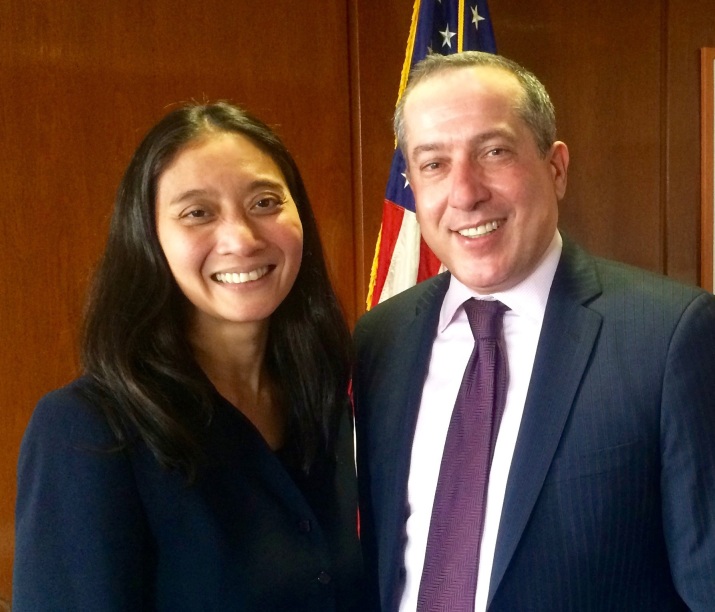Extra civil court: Judge Cannatarodge Cannataro
Folks, here’s a very special guest blog from my wonderful colleagues JoAn and Emily!JoAn Pangilinan-Taylor and Judge Cannataro in Manhattan Civil Court

Empowering People in Civil Court:
An Interview with the Honorable Judge Anthony Cannataro
By JoAn Pangilinan-Taylor and Emily Sernaker
New York Peace Institute deploys specially-trained mediators in Manhattan and Brooklyn Civil Court to help people resolve financial and civil matters. We offer this free resource with the support of the Unified Court System of New York and Civil Court judges. Manhattan Civil Court Supervising Judge Anthony Cannataro sat down with us to discuss our partnership and why this innovative approach works.
“The work New York Peace Institute does is directly related to the way we strive for excellence here in the Civil Court. In the quest for excellence, specifically resolving cases quickly and efficiently, the work that New York Peace Institute does is essential to making this court more efficient, and making my job easier.
Although these cases may not involve big numbers, to the person bringing the case it can be the most important issue in their lives at that time. Every judge sitting in this court is an elected Manhattan Civil Court judge. They come from this community, from every part of the city. They cover it literally from the Cloisters to the Battery. The judges, the clerks, court attorneys, the court officers really care about the people who are coming here.
Sometimes when parties can’t resolve their own dispute, the court has to resolve it for them. Nobody but the court has ownership of that result. And that can be dissatisfying to people. It’s always better, I think, when the parties can reach their own result. With mediation, even if everyone’s not fully thrilled with the result achieved, they built it. Collaboratively. And in those cases involving people who know each other, it lays the foundation for future relationships.
I think you, New York Peace Institute, are masterful in advocating for your form of dispute resolution — without making us feel threatened, or that there’s no place for our form of dispute resolution. In other words, you don’t sell what you do as a panacea. We know it doesn’t work with every single case, but you’re a beautiful complement to traditional dispute resolution. And that’s why our partnership works. That’s why you feel welcome here, because you are. I understand that there is a place for what both of us do.
I’m thrilled to hear that people are raising their hands to volunteer for mediation. That five, six people in a Small Claims Court are willing to explore the possibility of a collaborative approach. I think it says something nice about the community. Even when they’ve gotten to the point where they’re resorting to litigation, they’re still willing to try a cooperative solution to the problem.
People come to us scared, anxious and angry sometimes. They are unrepresented most of the time. The way we do it is according to a thick book of procedure with lots of rules and customs. And what you offer them — why I think the relationship is so symbiotic — is you offer them a way to really get (I’m pretty sure) to the same place, but with far less pressure, anxiety, and I think at the end of the process, more of a feeling of ownership of the result.
You have dedicated staff and volunteer mediators who are there to do that one thing. They are trained and prepared before they come into court. They are given the tools before they come in to be able to do whatever they are going to be called upon to do in these settings. And there’s a feeling now that it’s worthwhile. That we’re not just spinning our wheels. And not just looking at a case that is going to delay for another night while they go into mediation and nothing’s going to come out of it. We’re glad to have a professional organization that we can work with now.
I know it’s going to carry on – this relationship is going to last. Because we have gotten results. We got off to a great start, and it’s getting better every day. You’re part of what we do now.”

